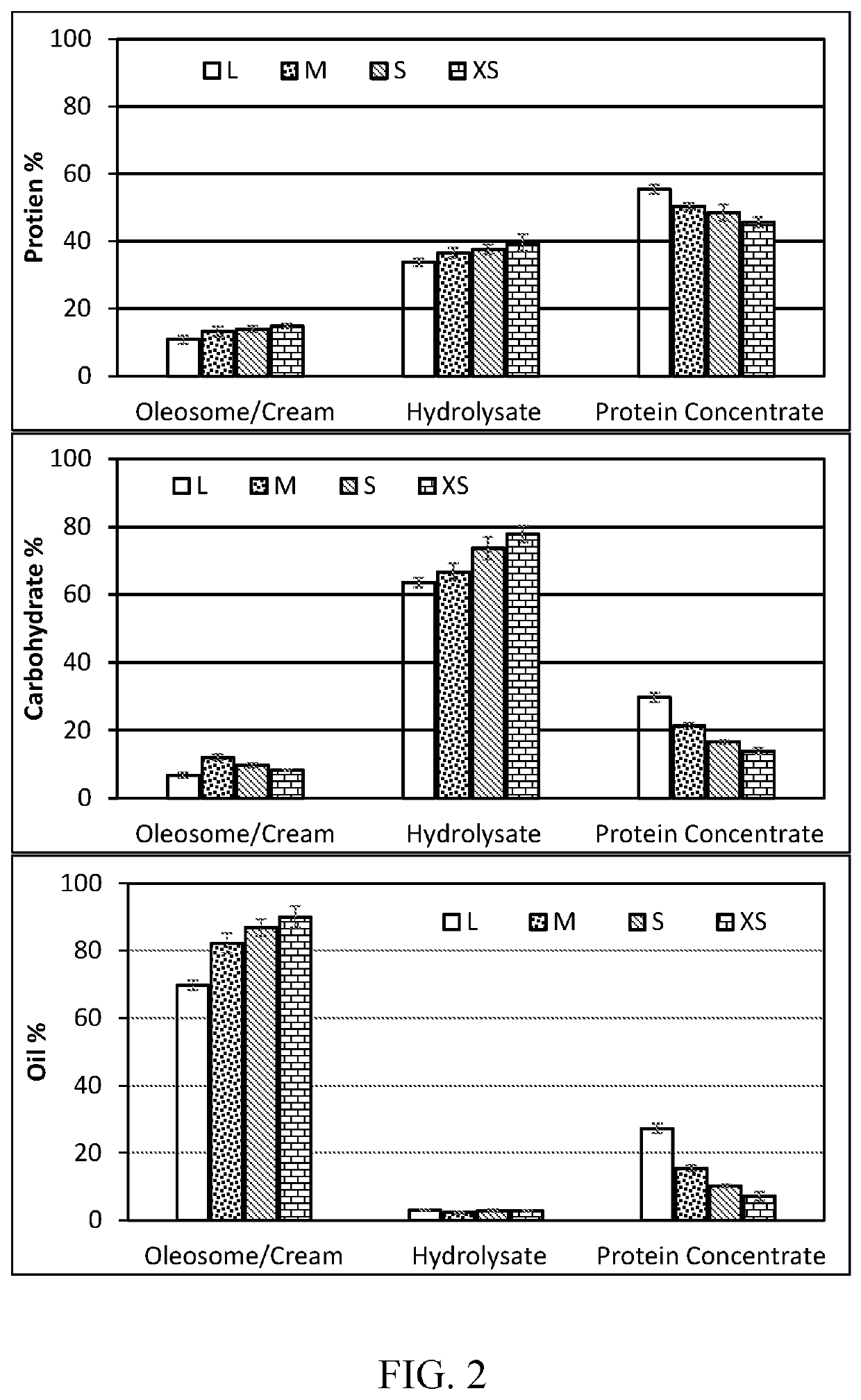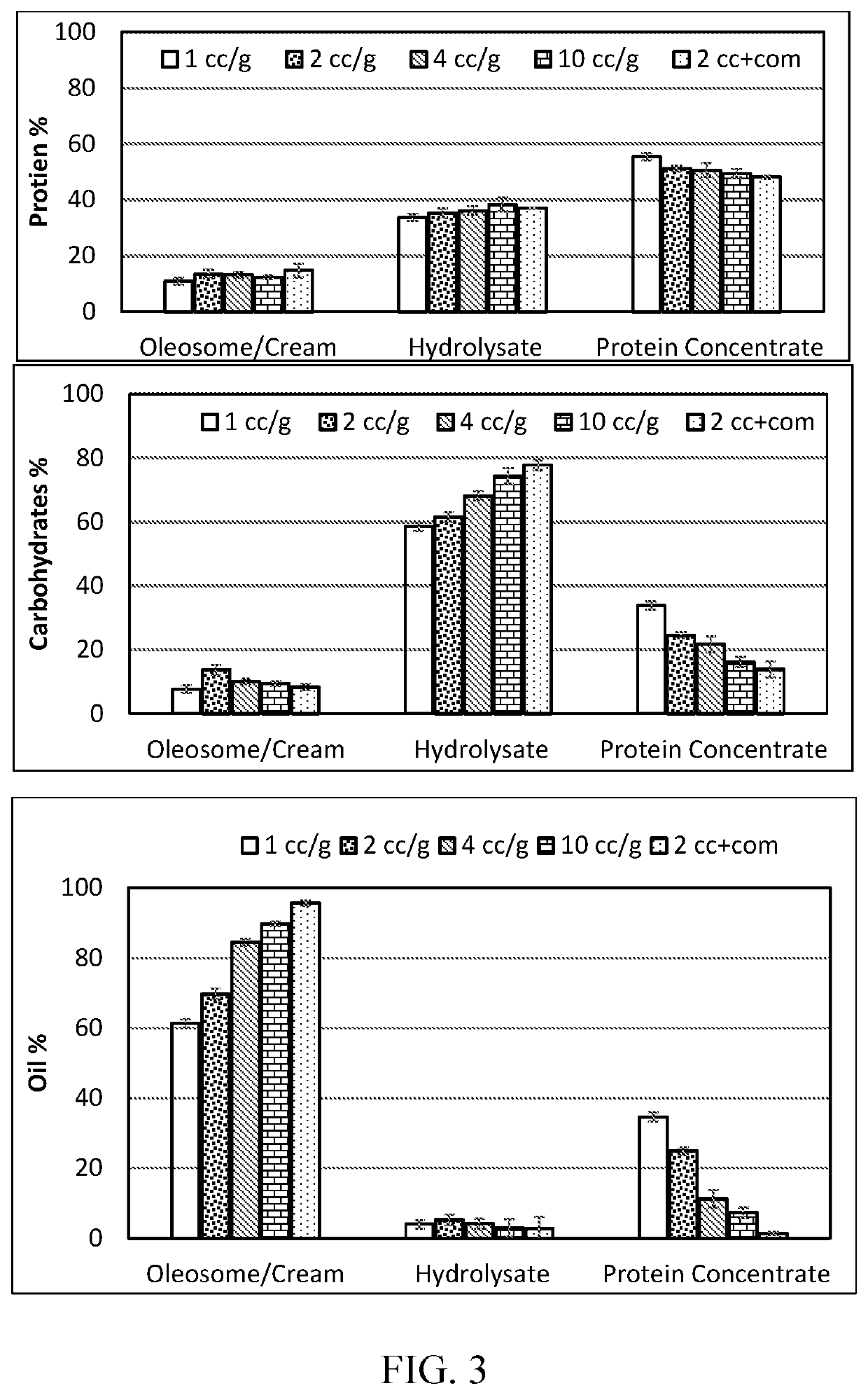Enzyme processing of soybeans into intact oil bodies, protein bodies, and hydrolyzed carbohydrates
- Summary
- Abstract
- Description
- Claims
- Application Information
AI Technical Summary
Benefits of technology
Problems solved by technology
Method used
Image
Examples
examples
[0088]The following examples are offered to more fully illustrate the invention, but are not to be construed as limiting the scope thereof.
Materials & Equipment
[0089]Full-fatted, dehulled, cracked soybeans were provided by Archer Daniels Midland (Decatur, Ill.). (NH4)2SO4 (granular), KH2PO4 (99% purity), HCl (concentrated, 37.4%) and NaOH (98.8%) were purchased from Fisher Scientific (Waltham, Mass.). Proteose peptone (from meat, Type I, for microbiology), MgSO4.7H2O (99%), MnSO4.4H2O (99%), ZnSO4.7H2O (ACS reagent grade), CoCl2.6H2O, FeSO4.7H2O (reagent grade), CaCl2.2H2O (reagent grade), urea (98%), NaN3 (>99%) and dinitrosalicylic acid (DNS, 98%) were purchased from Sigma-Aldrich (St. Louis, Mo.). The Aspergillus niger (NRRL 341) seed culture was obtained from the United States Department of Agriculture (USDA) Agricultural Research Service (ARS) Culture Collection (Peoria, Ill.). Two 3-L Bioflo 110 fermentors (New Brunswick Scientific; Edison, N.J.) were used for enzyme productio...
PUM
| Property | Measurement | Unit |
|---|---|---|
| Fraction | aaaaa | aaaaa |
| Fraction | aaaaa | aaaaa |
| Fraction | aaaaa | aaaaa |
Abstract
Description
Claims
Application Information
 Login to View More
Login to View More - R&D
- Intellectual Property
- Life Sciences
- Materials
- Tech Scout
- Unparalleled Data Quality
- Higher Quality Content
- 60% Fewer Hallucinations
Browse by: Latest US Patents, China's latest patents, Technical Efficacy Thesaurus, Application Domain, Technology Topic, Popular Technical Reports.
© 2025 PatSnap. All rights reserved.Legal|Privacy policy|Modern Slavery Act Transparency Statement|Sitemap|About US| Contact US: help@patsnap.com



